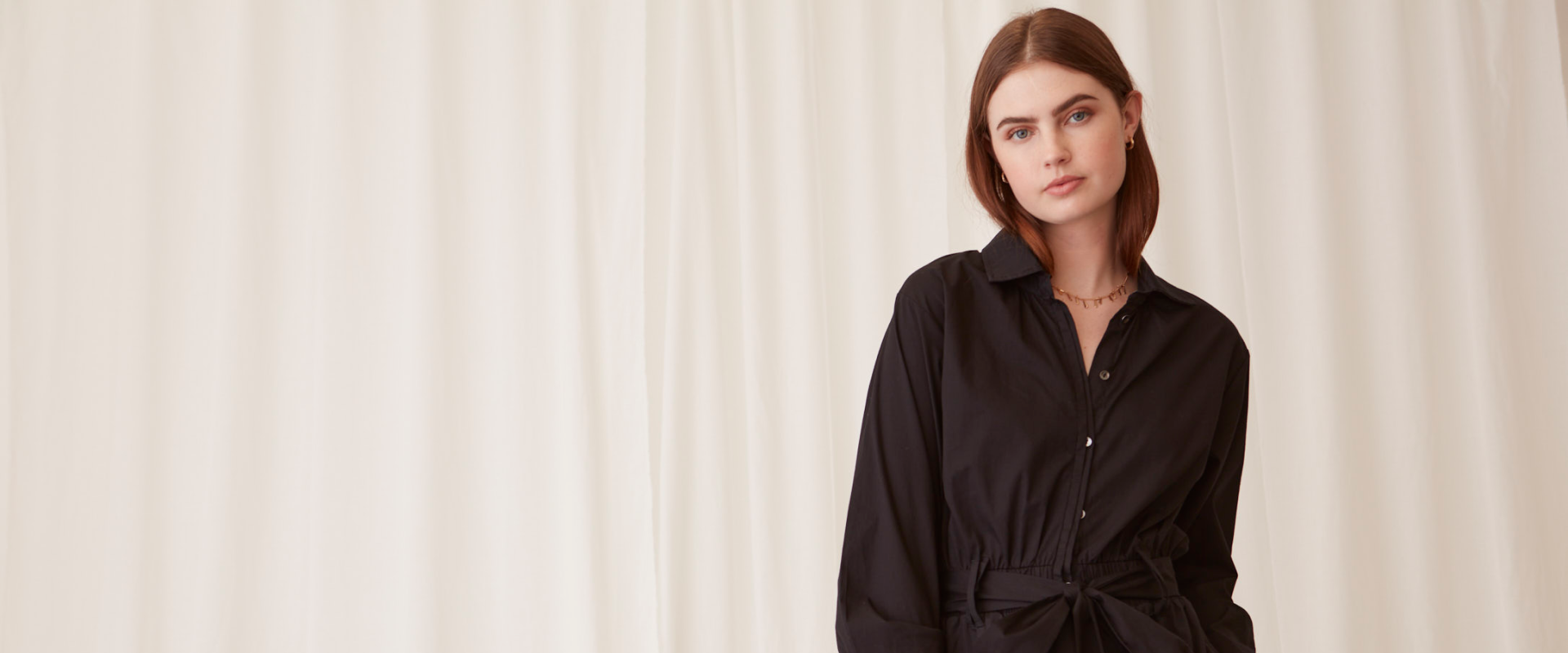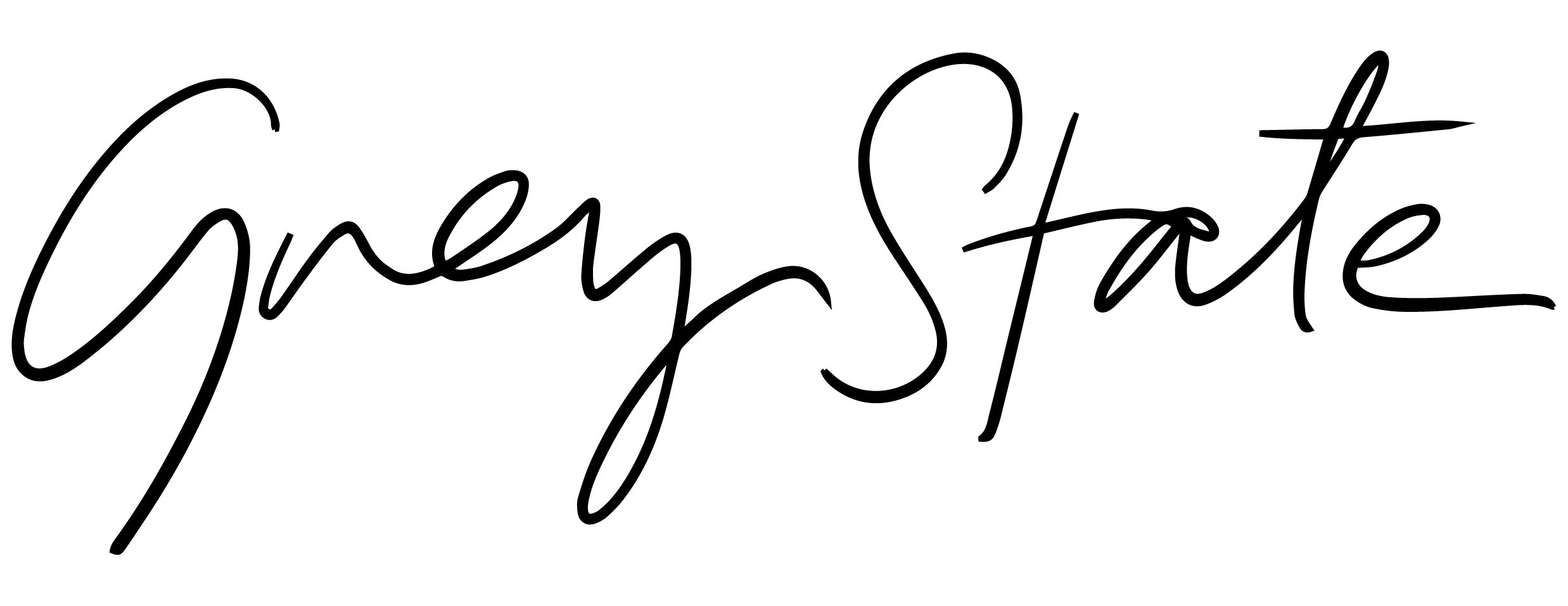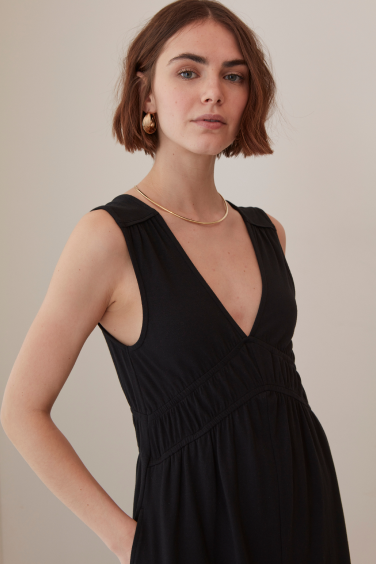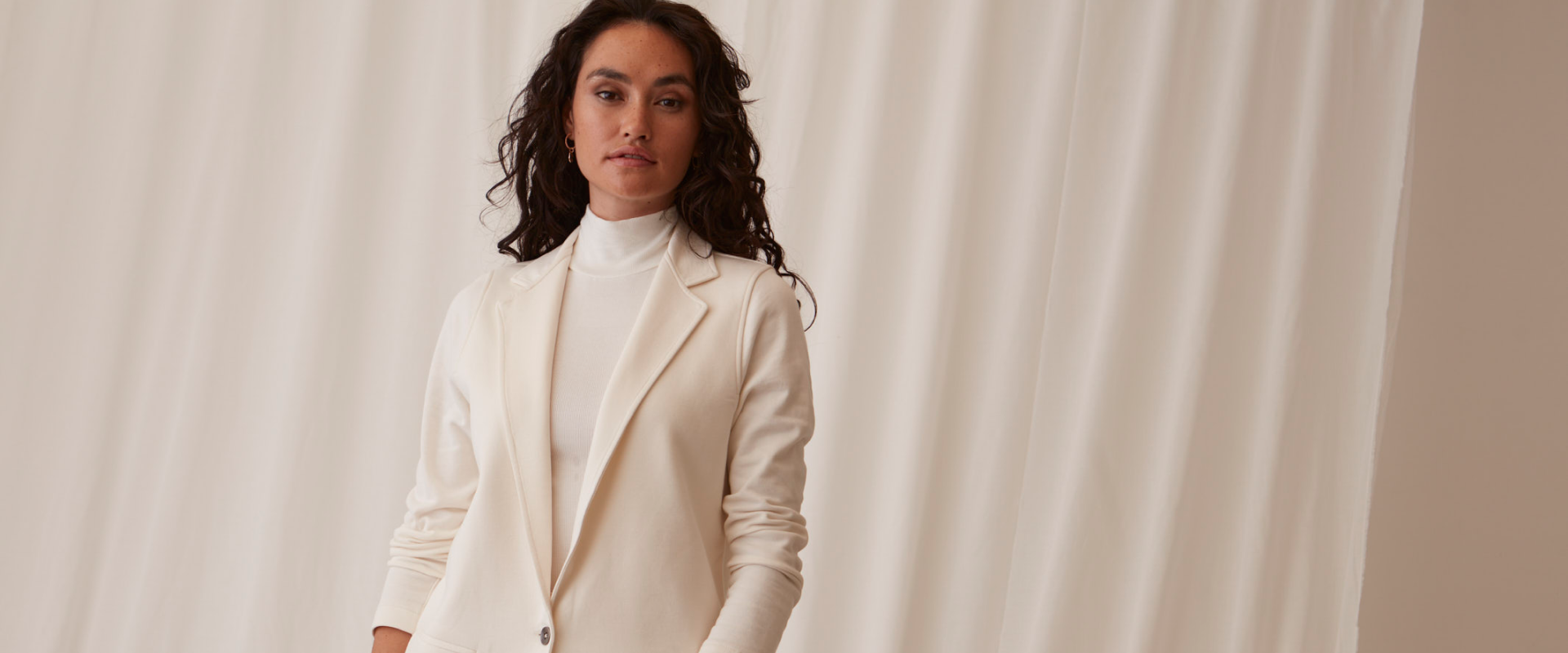
How to Dress for an Interview
How to Dress for an Interview in 2024: A Guide to Women's Best Interview Styles in the New Year
Congratulations on landing your job interview; it's not an inconsequential step on your journey to employment. It signals that you've put plenty of effort into your CV and your cover letter, that you have the necessary knowledge and skill, and that you've passed the initial selection process. You should be proud of yourself.
The next stage, however, is the interview, where you meet face-to-face with hiring managers, recruiters, or perhaps even business owners themselves. But you already got this; you understand the expectations and responsibilities associated with the role you're applying for, and you practiced answering all the important interview questions, like "What are your strengths and weaknesses?"
The only thing that's left is deciding what to wear for the interview, and finding the right clothes to wear can be as stressful as the interview itself. You must get your interview attire right; first impressions matter, and you only have one chance to make a good first impression.
Make no mistake; your expertise and experience aren't the only things being under the scope—the interviewer will make an initial impression of you within the first few seconds they see you, based on how you look. In fact, more than 55% of first impressions are determined by the way you dress and walk through the door in a job interview.
This obviously underscores the importance of dressing appropriately, and it also signals the interviewer that you're taking the job opportunity seriously and that you've made an effort. So, in this guide, we'll walk you through everything you need to know about the best interview styles in 2024.
What's New in Women's Interview Clothes in 2024?
Coco Chanel famously stated that fashion fades and only style remains the same. French fashion designer Yves Saint Laurent, one of the foremost fashion designers of the twentieth century, said something along those lines as well, underscoring the universal truths the aforementioned statement conveys.
The same applies to interview clothes. Sure, some companies might favor fashionable and trendy clothing, but even those companies favor style over fashion—emphasizing the importance of dress code.
Fortunately, women have plenty of options to choose from, and every style has its own "timeless" piece that would allow you to build a professional wardrobe and maintain a fashionable look. The main idea is to build several combo pieces that adhere to the dress code of the industry you're about to enter.
This way, you don't have to stress in front of an open closet in any last-minute situation, held back by your indecisiveness about what's appropriate to wear and what's not. It's a perfect way to achieve a timeless yet fashionable look regardless of the business setting.
What to Consider Before You Choose Your Interview Outfit
"Dress for the job you want, not the job you have" is probably one of the most powerful and impactful bits of career advice you'll ever receive, particularly because it's true. Allow us to take that advice one step further and back it up with additional things you want to consider when selecting your interview attire.
Common Rules of Thumb
While fashion constantly changes and styles evolve, some things remain a universal constant, and that applies to selecting an interview attire. One of the things you should prioritize for your interview is dressing one step up from what the work environment dictates.
For example, if the company's leaders and employees dress in smart casual, you should one up that by dressing in business casual—non-denim pants, such as Colby Pant, and a tucked-in shirt or a blouse would work well in this situation. The same applies to casual dresses (depending on the industry and dress code), in which case, modest lengths and necklines are expected.
You should also prioritize feeling comfortable and confident in your interview attire, so make sure that your garments aren't restricting your movement or that they don't irritate your skin. Being more physically comfortable in what you wear will put you more at ease, allowing you to focus on the conversation you're having with a potential employer.
The best approach is to wear something that you already know feels comfortable. This underscores the importance of having a few tried-and-tested outfits in different styles that you already know work well. It's better than investing in a new set of garments and then having to make last-minute modifications.
Last but definitely not least, please make sure that every garment comprising your outfit combo is clean, free of wrinkles or tears, and properly fitting. Fit is everything, and it's the most important style principle—if you don't think about fit, there's a good chance that you won't look or feel confident.
Research the Dress Code
In conjunction with everything previously mentioned, you need to research the company's dress code and get a better sense of the work environment, culture, and attire expectations. There are several ways you can do this, and simply calling or emailing your interviewer is often the best possible option.
Asking them about the dress code signals that you're willing to put in the effort, but most importantly, that you're not afraid to ask questions. You can ask them about the workplace dress code or how they would dress for an interview with the company where you're currently applying.
Another way to get a better sense of the company's dress code is to peruse the company's website and social media profiles (all and any you find) and look for images that might offer insight about the typical workplace attire for the position you're being interviewed for. This might not be as effective as calling or emailing your interviewer, but it's better than nothing.
Another good option is to visit the company's location, if possible, and observe firsthand how the company's employees dress. Admittedly, this is rarely a convenient option.
Based on your findings and the common rules of thumb, you'll be able to find an interview attire that's comfortable and shows confidence but also shows respect and thoughtfulness towards the interviewers, the company, and the position you're being interviewed for. This leads us to the final point.
Dress for the Interview Location
Not all interviews are conducted at the company's headquarters; armed with the knowledge of what's expected of you to wear, plan your interview outfit with the interview location in mind.
The 2019 pandemic changed many things (we're referring to COVID-19), and job interviews and workplace culture are few among many. It's no longer uncommon for companies to conduct interviews via Zoom or Teams, especially if you're applying for a remote position.
If that's the case, you want to choose an outfit whose colors contrast those of your background. This will allow you to "pop" and stand out against the background. However, you don't want to go with color options that clash too much.
For example, if your background is neutral in color, you want to wear something darker or rich in color to create contrast but not overwhelm the visuals. Shades like navy, burgundy, dark green, or charcoal are good choices.
Darker backgrounds would demand higher colors, such as light blues, soft grays, or even pastels, but please account for the dress code. Busy or colored and patterned backgrounds would require neutral, solid colors, such as navy, black, white, or beige. Neutral colors are a safe bet, as they'll keep the focus on you without clashing with the background colors and patterns.
On top of all that, you want to choose something that will complement your skin tone—you are in front of a camera, after all. But, at the same time, you should avoid bright reds and oranges, as they have the potential to create visual distortions on camera, and steer clear of intricate patterns, as they can create a distracting moiré effect.
For onsite interviews, take everything we previously discussed into consideration, but keep your physical comfort in mind. Most office spaces are air-conditioned, so they might feel a little chilly after a while. For outdoor locations, take seasons and weather into consideration.
Examples of Interview Outfits for Different Company Cultures
Now that we have covered all the factors that you need to consider when selecting your interview attire, it's important to discuss what exactly works best for different industries and different cultures.
An Interview Outfit for a Hip Young Company
Hip young companies have a more relaxed dress code compared to conservative ones, which usually allows for more personal expression through fashion choices, balanced with a smidge of professionalism—just enough to maintain a productive environment.
For example, tech and startup dress codes often reflect a relaxed yet professional workplace culture. So, tailored pants in combination with a fitted blouse and comfortable flats would work wonders in your interview. A knee-length dress under a suit jacket or a blazer, such as Estelle or Daphne blazers, paired with booties (low-heeled ankle boots), is also a good option for casual attire.
Creative industries offer a more casual environment; they're more relaxed, and they encourage artistic and unique clothing elements, including stylish dresses, unique accessories, and statement pieces. Good combinations include blouses paired with high-waisted trousers, stylish flats, and statement earrings, or a stylish dress with heeled sandals and a unique necklace.
Media and Entertainment industries are on the opposite side of the scale, as these companies usually prefer professionalism mixed with trend-forward and comfortable outfits. Think in terms of a tailored jumpsuit, with a suit jacket and sleek sneakers, or a fashionable skirt paired with a blouse and stylish boots, complemented by some bold jewelry. A pantsuit could also work.
An Interview Outfit for a Casual Company
Companies that adhere to a more casual dress code tend to focus on the comfort and functionality of their attire, which should be suitable for a broader range of activities. These outfits are usually more relaxed than those associated with conservative businesses; they're accessible and modest but still look professional.
For example, if you're interviewing for a position within a non-profit organization, look for business casual with a focus on practicality. If you're being interviewed for a position that implies outdoor time, you need to look for something more durable and comfortable, such as khakis and breathable blouses. Outdoor work, such as environmental, implies closed-toe shoes.
Non-profits that imply indoor work are different; you'll blend in with the corporate culture perfectly by simply wearing a modest blouse paired with tailored slacks and simple loafers. Retail management is where things really kick off into a professional yet fashion-conscious look.
This type of casual dress code mixes current trends with more formal business attire, giving off a project-management-type vibe. Wearing high-waisted trousers paired with a silk blouse, booties, and some hard-working jewelry (minimalist) is the way to go. You could also get by with a professionally-looking dress, like Samira Dress, under a tailored suit jacket.
An Interview Outfit for a Conservative Company
Conservative companies, such as those operating in corporate, finance, engineering, law, and real estate, have exceptionally high standards when it comes to dress code, known as business professional or even business formal (one step up). They often require suits that adhere to classic styles and do their best to avoid casual wear in the workplace.
Thus, the best interview attire choice really depends on the industry you're going to be working in. For example, corporate and finance prioritize tailored suits, button-down shirts (dress shirts), and dress shoes, which reflect the industry's formal and traditional nature.
As such, a tailored black suit with a white dress shirt and low-heeled black dress shoes works really well in these environments. A slightly softer alternative would be a grey pencil skirt paired with medium-heel shoes and a light blue shirt.
Law companies also tend to adhere to more traditional and formal dress codes. Nothing beats a classic navy suit with a white shirt and more conservative-heeled shoes to reflect the structured and traditional nature of the legal industry.
The real estate industry is a bit more relaxed than the previous two, but it still adheres to a more conservative style. Tailored dress pants with a white blouse and a navy suit jacket work really well, but so does a solid-color sheath dress complemented by a statement scarf and heels.
Engineering, as perhaps the most casual of the conservative disciplines, prioritizes neat and practical clothing that strikes a near-perfect balance between professionalism, mobility, and comfort. Think in terms of a collated shirt with pressed khakis and loafers.
Additional Style Things to Consider
While clothing is important, the devil is in the details, and other factors affect the first impression as well. The biggest rule of thumb is a tailored, or at least fitted, shirt—it's a must for your interview, regardless of how strict the dress code is.
Button-down shirts generally pair well with pants or skirts, while blouses pair well with knee-length skirts. Also, pay attention to the skirt vent; it may seem acceptable when you're standing up, but once you sit down, it might reach mid-thigh, which is equal to capital sin in a more conservative setting.
We suggest performing a mirror check when selecting your outfit. Just sit on a chair in front of a large mirror and make sure that everything's where it's supposed to be. Accessories are important. Wear a classic watch with a metal or a leather band in any setting. Rings, especially wedding rings and other types of jewelry, should be simple and professional.
So, avoid large or chunky bracelets, necklaces, and earrings, as they can be quite distracting. Simple stud or hoop earrings, paired with a delicate necklace and a simple bracelet—that doesn't jangle around your wrist too much—are good choices. If you're wearing nail polish, ensure that it's color-matching, suitable, and not chipped.
Your hairstyle also matters, but the criteria here are a bit softer. Just wear what's comfortable, but step it up a bit, even if it means adding a bobby pin to keep that one rebellious lock in its place. When it comes to perfume or cologne, less is more. Some people might be allergic to chemicals and ingredients in perfume and cologne, while others might find it unpleasant or distracting.
The perfect amount of perfume or cologne should ideally be noticeable at close and intimate distances, generally within an arm's length. Anything more than that might be obtrusive. Also, different perfumes and colognes have different intensities, so experiment a little before applying them. The same applies to any footwear you buy as part of your interview/work attire.
We recommend wearing them for an hour or two around the house to break them in before wearing them to work. It's a good way to avoid uncomfortable foot injuries. One last piece of advice: turn off your personal electronics before the interview.
What Not to Wear to an Interview
Suppose you inquire about what to wear to an interview with your interviewer, and you get a "it doesn't matter" response. Neglect that response because it most certainly does matter. Regardless of how casual or informal the workplace might be, there are some things that you should never wear to an interview.
Avoid overly casual clothing such as sports footwear, flip-flops, shorts, and tank tops, even if you're interviewing for a position at a local gym. Remember what we previously discussed; your outfit should look more formal compared to those already working at the company.
Additionally, make sure that your underwear isn't showing. Sure, a barely noticeable bra strap might not be a big deal, but it's a big no-no in a corporate setting. There should be no visible bra straps, and the top of your underwear shouldn't be showing above your pants. Always choose underwear that blends well with your asking tone, so it doesn't go through the thin fabrics, and avoid garments that could be too revealing.
Do You Need Women's Clothes for an Upcoming Interview?
If you're looking to build your professional wardrobe with seasonless pieces that are stylish, comfortable, and universally flattering, check out Gray State Appeal—we offer garments that give you effortless style and irresistible comfort so you can comfortably go to your job interview confidently knowing that you're looking as professional and stunning as possible.





